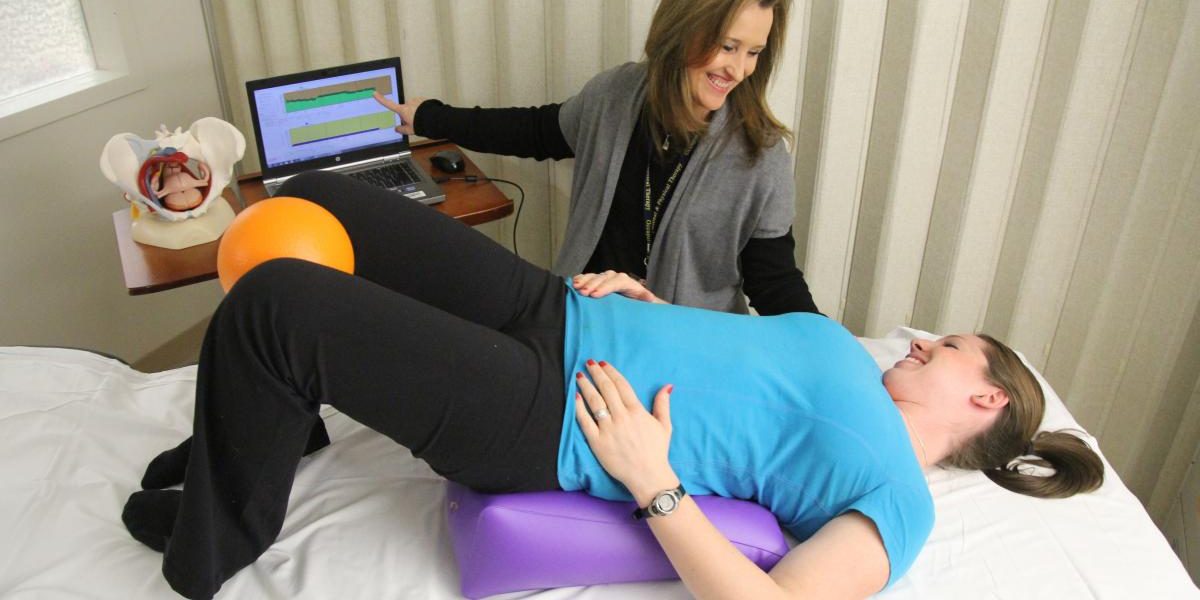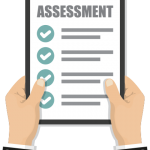
Our Special
Pelvic Floor Physiotherapy
Pelvic floor physical therapy involves the pelvic floor muscle group, which is responsible for a variety of functions. These muscles support the pelvic organs, assist in bowel and bladder control, and contribute to sexual arousal and orgasm.
A person may be referred to pelvic floor physical therapy to treat incontinence, difficulty with urination or bowel movements, constipation, chronic pelvic pain, and painful intercourse.
Women may see a pelvic floor physical therapist for treatment of vaginismus or endometriosis. Male disorders, such as painful ejaculation and premature ejaculation, can also be treated this way.
- Education. Patients may need to learn more about their pelvic anatomy and how different components work alone and together. They may also need to learn how habits or hygiene affect their symptoms.
- Pelvic floor exercises. Patients are taught how to contract and relax pelvic floor muscles in relation to other muscles. They are also taught breathing and timing techniques to make the exercises more effective. Such exercises can stretch tight muscles, strengthen weak ones, and improve flexibility.
- Manual therapy. A physical therapist may use hands-on massage or stretching to help with posture, blood circulation, and mobility.
- Pelvic floor biofeedback. Biofeedback is a technique that can help patients “see” how the pelvic floor muscles are working. To do this, a probe is inserted into a woman’s vagina or a man’s anus and results are displayed on a computer screen.
- Electrical stimulation. A low voltage electrical current may be used to teach patients how to coordinate their muscle contractions.
- Vaginal dilators. These tube-shaped plastic devices can help women learn to relax their pelvic muscles to allow easier penetration. Women who have been treated for gynecological cancer may also find them helpful for vaginal rehabilitation after treatment.
What Conditions Can Be Treated?
- Urinary Incontinence – both Stress Incontinence and Urge Incontinence (overactive bladder).
- Pelvic Organ Prolapse in women
- Pelvic Pain:
- In Women,conditions such as:
- Dyspareunia (painful intercourse)
- Vestibulodynia (previously known as Vulvar vestibulitis syndrome)
- Vulvodynia
- Vaginismus
- Pelvic pain related to pregnancy and childbirth
- Pain related to post-partum scar tissue or adhesions
- Coccyx or “tailbone” pain
- In Men,conditions such as:
- Chronic prostatitis
- Testicular and/or penile pain syndromes
- Chronic constipation
- Bowel/Faecal Incontinence in men & women
- Post-prostatectomy incontinence
- Nocturia (frequent urination at night)
- Pudendal Nerve irritation/pinching
- Pre-natal pelvic and low back pain
- Weak core stabilization & muscle control (e.g. Diastasis Recti)
- In Women,conditions such as:
Urinary Incontinence
Bladder leaking is a real problem for many people. The Canadian Continence Foundation estimates that approximately 3.3 milllion Canadians experience some degree of incontinence, as high as 1 in 4 women. Incontinence can almost always be cured, improved or at least successfully managed. There are many treatment or incontinence management options depending on the nature and cause of the incontinence. Time-scheduled toileting routines, diet/fluid intake changes, or exercises, with or without biofeedback and/or electrical stimulation equipment, may help.
Pelvic Organ Prolapse in Women
Sometimes known/felt as “heaviness in the vagina”. Weakening of the pelvic floor muscles can diminish support of the body’s internal organs such as the bladder, uterus and rectum. This may result in a dropping of the bladder backward into the vagina, known as a cystocoele, a dropping of the uterus down into the vagina, known as a uterocoele, or a dropping forward of the rectum into the vagina, known as a rectocoele. Weakening of the pelvic floor may occur after childbirth or may related to a decline in estrogen during peri- and post-menopausal years. Pelvic floor muscle training cannot reverse the prolapse itself but can significantly reduce the symptoms by improving muscle tone and supporting the organs like a shelf from below. Correcting poor patterns of abdominal use can also help.
Pelvic Pain
It is estimated that as many as 15% of North American women suffer from pain in the pelvic floor area. Women may experience a burning/sharp pain during intercourse (dyspareunia), have difficulty during yearly medical examinations or with using tampons during menstruation. Men may experience pain in the pelvic region or lower abdomen, groin, sacrum, or tailbone, as well as pain during/after ejaculation. A terrible cycle of pain can develop where the experience of pain can lead to increased tension/guarding in the pelvic floor muscles which leads to increased pain, which leads to increased muscle tension/guarding which leads back to more pain.
Pelvic floor physiotherapy before or after prostatectomy can help with pain management, erectile function, and incontinence.
The goal of treatment is to increase muscle and soft tissue flexibility, increase muscle awareness and control, which then decreases tension and improves relaxation in the pelvic floor muscles. Education about the structure of the pelvic floor and its relationship to the pain and how the body subsequently responds, is very important. Internal and external manual therapy techniques and home exercises may be used to release the high tension/tone.
What Should I Expect During My Visits?
Pelvic floor physiotherapy sessions are conducted in a quiet, private room, comfortable, and professional environment. On your first visit, your physiotherapist will conduct an assessment which includes a thorough health history and physical examination. The physical examination often includes an internal evaluation, via the vagina and/or rectum to assess the pelvic floor muscle function .A treatment plan will be developed based on your specific assessment findings.
Our expertise &
process Programs

Make an Appointment
Fill this form and we’ll call you back soon.




